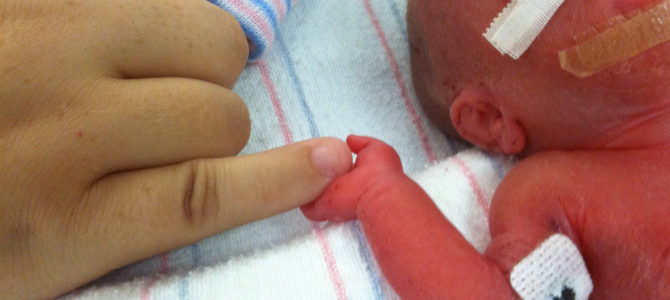
Earlier this month, a federal judge in Whole Woman’s Health v. Paxton entered a temporary restraining order prohibiting Texas officials from enforcing the state’s legislative ban on live dismemberment abortions—abortions performed by a doctor pulling a fetus apart limb by limb until the unborn baby dies. As I explained recently, rather than further challenge the district court’s temporary injunction, Texas’s Attorney General Ken Paxton opted instead to head to trial. Trial is set to begin on November 2.
At trial, the plaintiffs—Whole Woman’s Health and a slew of other abortion providers, including Planned Parenthood—must prove that the live dismemberment abortion ban contained in Texas’s Senate Bill 8 “imposes an undue burden on women seeking to terminate a pregnancy before viability.” As the Supreme Court recently clarified, whether a law places an undue burden on a woman’s “right” to choose an abortion, courts must “consider the burdens a law imposes on abortion access together with the benefits those laws confer.”
In preliminary court filings, the plaintiffs have already made clear their theory of the case: Senate Bill 8 imposes an undue burden on abortion access by banning the safest method of second-trimester abortions—dilation and evacuation, or D&E, abortions. Texas has defended the ban’s constitutionality by stressing that abortion providers may legally perform D&E abortions by causing fetal demise prior to dismemberment, with, for instance, the poison digoxin or by severing the umbilical cord. But the plaintiffs obtained a preliminary injunction by making “sweeping allegations that causing fetal demise prior to dismemberment is not feasible because some doctors do not currently do it, it is unsafe, and it is ineffective.”
Then Comes the Discovery
Late last week, though, Paxton’s office won an important victory in its efforts to counter these claims: After six weeks of refusing to comply with Texas’s discovery requests, the district court ordered the abortion providers to turn over detailed information concerning the second-trimester abortions performed at their Texas clinics.
Of significance, the abortion providers must identify each individual who performs or has performed abortions on fetuses 14 weeks old or older, from 2001 to the present, detailing the procedure performed, whether digoxin or another fetal demise technique was used, and whether fetal demise occurred prior to dismemberment, as well as whether any complications occurred. Additionally, the federal court ordered the plaintiffs to provide all records of digoxin purchases, any informational material or consent forms related to digoxin, and communications between Planned Parenthood Federated of America and the Planned Parenthood plaintiffs regarding digoxin.
While it is too early to know whether these documents will negate the plaintiffs’ assertion that methods of causing fetal demise prior to dismemberment are ineffective and unsafe (to the woman), there is some evidence that will be the case. Specifically, in its Motion to Compel, Texas noted that in seeking a preliminary injunction, the plaintiffs alleged digoxin fails to cause fetal demise 5 to 10 percent of the time, but that in discovery two of the plaintiff physicians who currently use digoxin estimate only a 1 to 2 percent failure rate.
Similarly, while the plaintiffs alleged that digoxin use prior to 18 weeks is “experimental,” implying that it is thus somehow unsafe (to the mother), Texas noted in its court filings that Planned Parenthood’s current policies—which were filed under seal and thus not available to the public—“clearly contemplate that providers may use digoxin in earlier gestational ages.”
Now that the court has ordered the abortion providers to comply with Texas’s requests for additional information, the state will have access to internal documentation and communications to counter the plaintiffs’ assertion that the ban on live dismemberment abortions imposes an undue burden on abortion access.
Texas Still Has Lots of Work to Do
In addition, Paxton’s legal team will need to provide evidentiary support for the two main benefits Texas’s live dismemberment abortion bans confer: Protecting the integrity of the medical community and requiring the humane treatment of unborn (but constitutionally unprotected) human beings.
It is still unclear what witnesses Texas intends to call, as the parties agreed not to file their witness lists with the court. But there is abundant evidence available to support Texas’s claim that performing later-term dismemberment abortions on still-living human beings degrades the integrity of the medical profession. David Daleiden and Sandra Merritt’s undercover Planned Parenthood videos for the Center for Medical Progress exposed that much, from doctors chomping on salads and swirling wine while nonchalantly discussing “crushing above” and “crushing below” to get the best fetal specimens, to cavalier Lamborghini-coveting abortion providers haggling over the price of baby body parts.
Then there is always the morbidity on display when one abortion provider was asked in the videos if there were “any fresh specimens from today” to view. The abortion provider responded with a laugh: “We had a really long day, and they’re all mixed up together in a bag.”
Add to that the discovery in Michigan of an abortion doctor driving around with fetal remains in his trunk, and the progression of Kermit Gosnell from “a ‘respected man’ in his community” to mass murder. This is a man who began his career proclaiming, “As a physician, I am very concerned about the sanctity of life. But it is for this precise reason that I provide abortions for women who want and need them,” and ended it by stabbing newborn babies after failed abortions.
Whether We Will ‘Ignore the Pain of the Fetus or Not’
Evidence also supports Texas’s position that the live dismemberment abortion ban helps further the state’s goal of preventing abortion providers from causing the death of fetus in an inhumane way. In its earlier court filings, Texas stressed that it would be illegal to kill an animal in the way the abortion providers kill a fetus in dismemberment abortions—pulling the unborn baby apart limb from limb until he bleeds to death. At trial, Texas would be well-served to back up this point with expert testimony from Dr. Maureen Condic. Condic testified before Congress on human development in uterus, explaining:
To experience pain, a noxious stimulus must be detected. The neural structures necessary to detect noxious stimuli are in place by 8-10 weeks of human development. There is universal agreement that pain is detected by the fetus in the first trimester. The debate concerns how pain is experienced; i.e., whether a fetus has the same pain experience a newborn or an adult would have. . . .
In the end, when considering pain in any other human individual we must choose, based on what we know and what we observe, whether we will give that individual the benefit of the doubt, out of compassion, empathy and justice, or whether we will ignore the pain they experience simply because the precise psychological quality of their pain cannot be known with certainty. And this choice is as much about the kind of society we want to be as it is about the experience of the fetus. Imposing pain on any pain-capable living creature is cruelty. And ignoring the pain experienced by another human individual for any reason is barbaric. We don’t need to know if a human fetus is self-reflective or even self-aware to afford it the same consideration we currently afford other pain-capable species. We simply have to decide whether we will choose to ignore the pain of the fetus or not.
Of course, these same facts also prove the inhumanity of killing a fetus by dioxin poisoning or severing his umbilical cord, neither of which causes instantaneous death. But that is exactly the point. Thus even if the abortion providers win following a trial, the pro-life cause will have succeeded in laying bare the violence of abortion—both to the public and later to the most likely destination, the U.S. Supreme Court.









